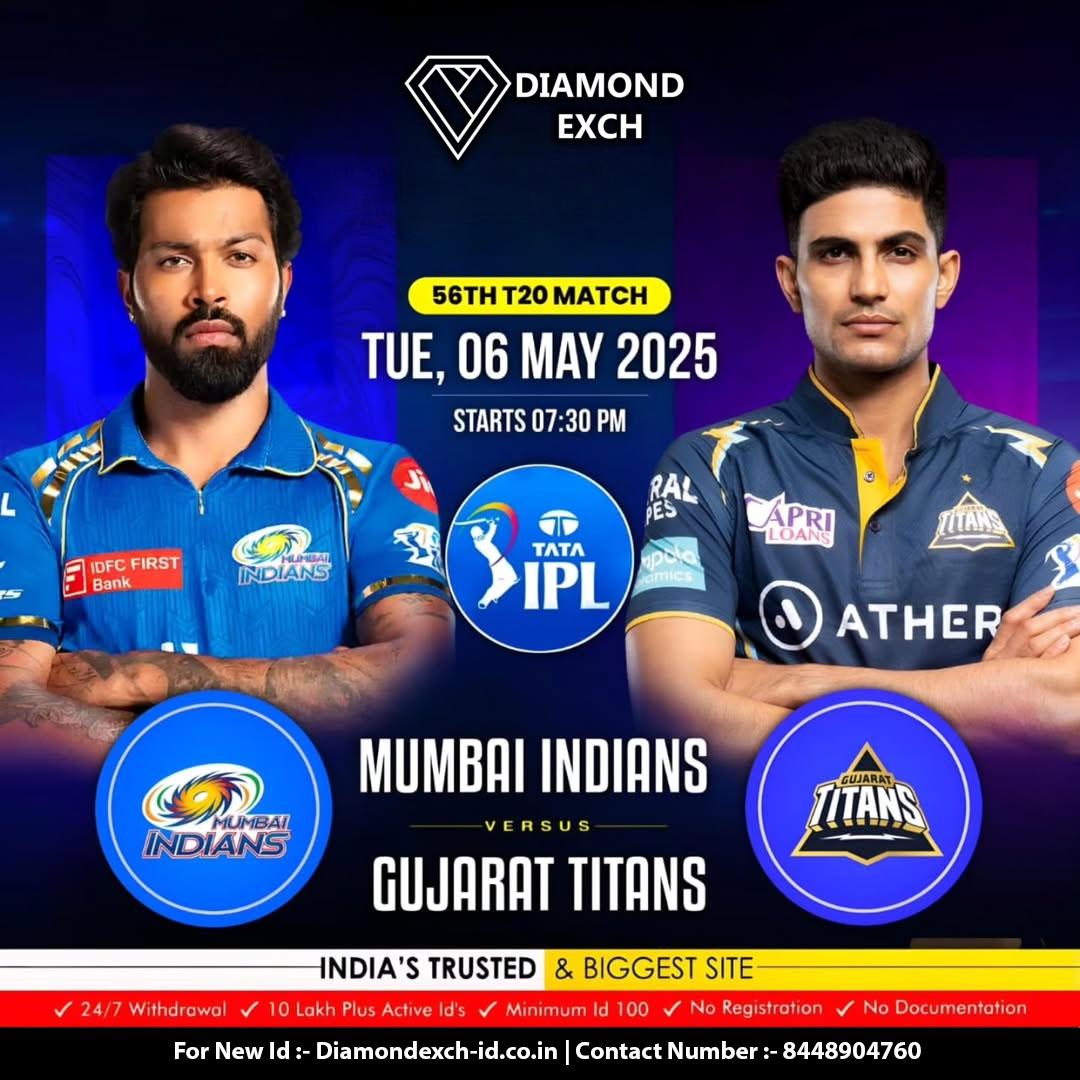Notifications

7 minutes, 22 seconds
-22 Views 0 Comments 0 Likes 0 Reviews

Cricket has always been a sport rich in tradition, but as technology evolves, so do the ways we engage with it. Enter Diamond Exchange 9 —a concept that promises to revolutionize how fans and players interact within the cricketing world. Imagine having instant access to player stats, match analytics, and even personalized experiences at your fingertips during live games! This innovative approach could redefine not just how matches are played but also how they’re experienced by millions of fans around the globe. As we look ahead to 2025, it's time to explore whether these digital identifiers will truly be game changers or merely another fleeting trend in sports technology. Join us as we delve into the potential impact of Diamond Exchange IDs on global cricket events!
Diamond Exchange IDs present several advantages for stakeholders in the cricket world. First and foremost, they enhance transparency. With each player's unique ID, fans can easily track statistics, performance metrics, and even player backgrounds.
Moreover, these IDs streamline ticketing processes. Fans can securely purchase tickets linked to their Diamond Exchange ID, reducing fraud risks significantly. This fosters trust among spectators who want genuine experiences at matches.
Another key benefit is improved data analytics. Teams and coaches gain access to valuable insights about player performances through their Diamond Exchange profiles. This can influence training methods and strategic decisions on the field.
Additionally, sponsorship opportunities increase as brands seek partnerships with players boasting high visibility through their IDs. It creates a new avenue for revenue generation that benefits both players and teams alike.
While Diamond Exchange IDs promise innovation, they also bring forth a range of challenges. One major concern is data privacy. With player personal information and performance metrics on display, there's potential for misuse.
Security risks are another significant issue. Cyberattacks could compromise the integrity of these systems, endangering sensitive information and trust in the platform.
Furthermore, there’s skepticism from traditionalists within the cricket community. Many fear that such technology could overshadow the game's rich heritage and simple charm.
Regulatory hurdles also loom large. Establishing standards for usage across different leagues can prove complex, leading to inconsistencies in application globally.
Education plays a crucial role. Players, teams, and fans must grasp how Diamond Exchange IDs work to maximize their benefits—a challenge that requires time and strategic communication efforts.
In recent years, several sports leagues have adopted innovative technologies akin to the concept of Diamond Exchange IDs. The NBA has embraced blockchain technology for ticketing, enhancing security and transparency for fans.
Meanwhile, Major League Baseball (MLB) is utilizing player tracking systems that provide real-time data analytics. This helps teams make informed decisions while engaging fans through enhanced viewing experiences.
The NFL's partnership with Next Gen Stats offers insights into player performance via wearable tech. Fans can access detailed stats during games, enriching their experience and understanding of gameplay dynamics.
These examples illustrate a growing trend in sports towards digital transformation. As leagues explore advanced technologies, they set precedents that could inspire cricket’s potential integration of similar innovations like Diamond Exchange IDs.
Cricket analysts are divided on the potential of Diamond Exchange IDs. Some view it as a revolutionary step, enhancing transparency and trust in player transactions. They argue that this technology can streamline processes and improve fan engagement.
On the other hand, skeptics express concerns about its implementation. They question whether cricket’s traditional structure is ready Diamond Exchange 9 for such innovation. The fear is that it could complicate existing systems rather than simplify them.
Various industry experts highlight the need for strong regulatory frameworks to support Diamond Exchange IDs. Without proper oversight, misuse or data breaches could undermine confidence among players and fans alike.
Furthermore, there's optimism regarding partnerships with tech firms to develop user-friendly interfaces. This would ensure both players and teams benefit from seamless interaction with their digital identities.
As discussions progress, it's clear that while the path forward may be rocky, interest in these technologies remains high within the cricketing community.
The introduction of Diamond Exchange IDs in global cricket events has certainly sparked interest and debate. These IDs have the potential to revolutionize how players, teams, and fans interact with the game. They offer a range of advantages that could enhance transparency, increase fan engagement, and streamline operations.
However, challenges remain. Concerns about data privacy, technological integration, and regulatory frameworks are critical points that need addressing before widespread adoption can take place. The experiences from other sports leagues reveal both opportunities for success and cautionary tales regarding implementation.
Experts remain divided on whether Diamond Exchange IDs will become a staple in cricket or fade away as just another trend. The landscape of sports technology is ever-evolving, making predictions difficult yet fascinating.
As we look toward 2025 and beyond, it becomes clear that only time will tell if Diamond Exchange IDs mark the dawn of a new era in cricket or simply another fleeting moment in its storied history.
Cricket sports Diamond Exchange Id Diamond Exchange Diamond Exchange 99 Diamond Exchange 9 Diamond Exchange 9 Login ipl2025

